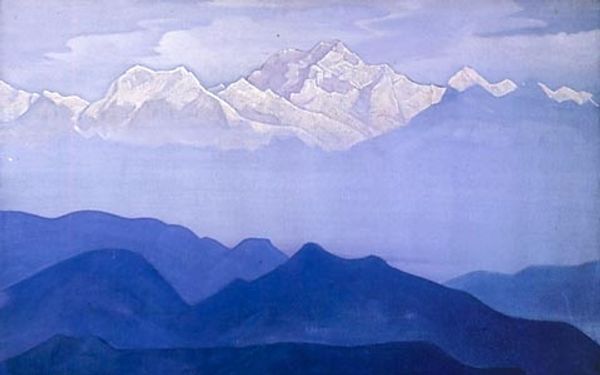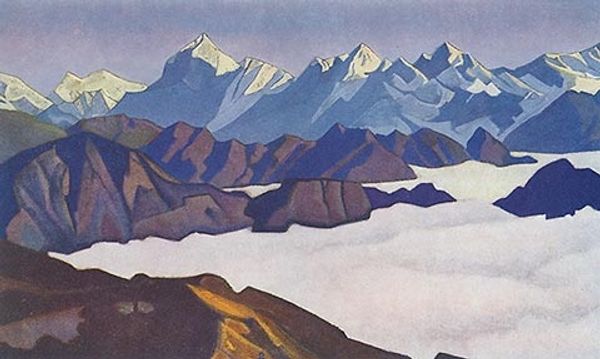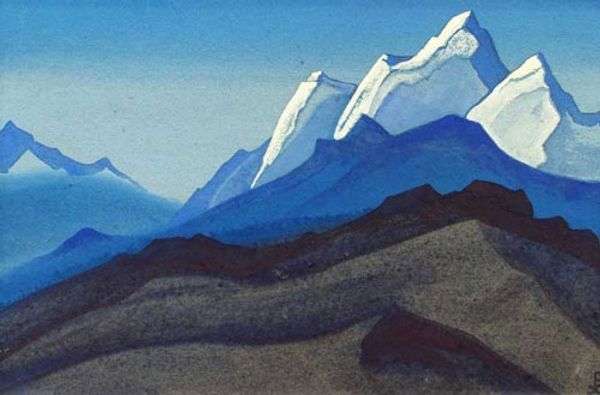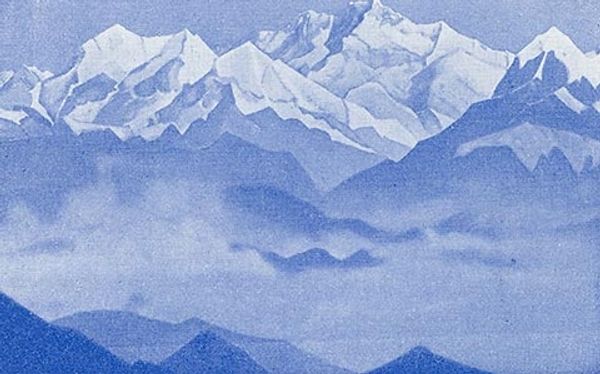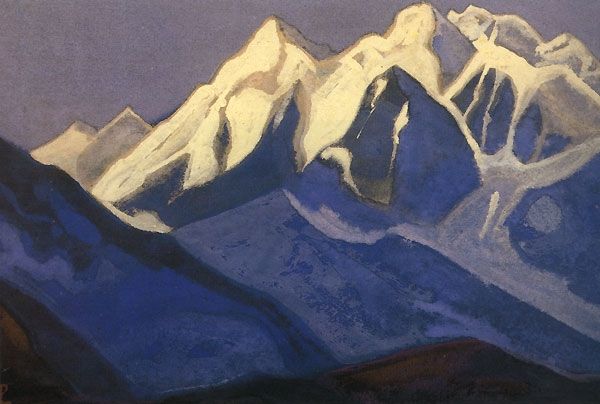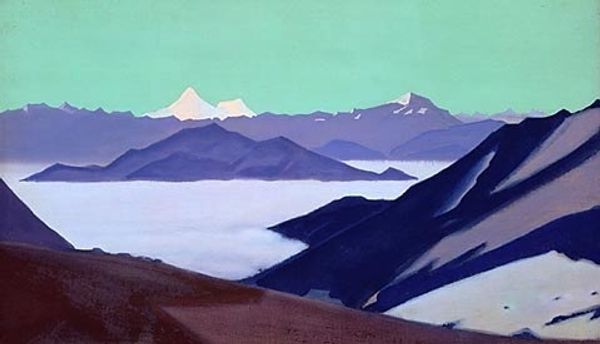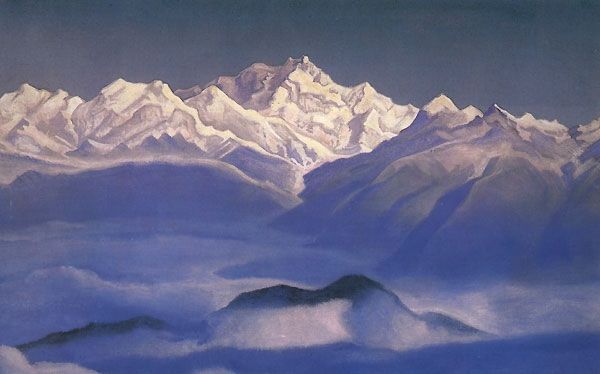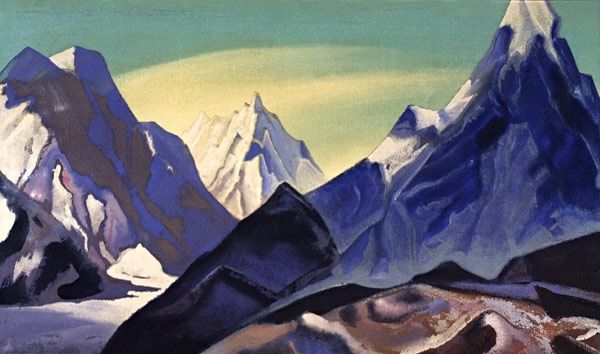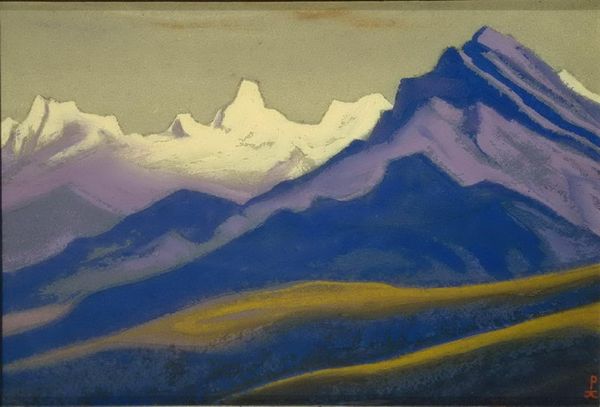
Copyright: Public domain
Curator: Looking at this artwork, "Himalayas" by Nicholas Roerich, painted in 1921 using tempera, I am immediately struck by the sheer serenity it evokes. Editor: It’s such a calming landscape, isn't it? Almost hypnotic in its layering of indigo and pale sky. I wonder about the context. The 1920s, following World War I… Was this a search for peace and transcendence amidst global turmoil? Curator: Roerich, deeply immersed in theosophy and Eastern philosophy, certainly sought the spiritual in the Himalayas. Mountains, universally, represent transcendence. They are sites of revelation and challenge. For Roerich, the Himalayas were not just a geographical location, but a symbolic one. Editor: It's interesting that you mention universality. Do you think this imagery—snow-capped peaks shrouded in mist—resonated differently then than it does now? Roerich's travels and paintings also occurred alongside British colonial interests in the region. Were these paintings seen as challenging or reinforcing imperial narratives? Curator: That’s a compelling question. While Roerich's focus was primarily spiritual, the accessibility of such imagery, presented to Western audiences, invariably became entwined with imperial perspectives on exotic locales. Editor: So, this painting straddles the line between a personal spiritual quest and a broader cultural interpretation shaped by political power dynamics. Did the formal elements of the work contribute to either side? For instance, the simplification of form almost reminds me of stage design, creating distance. Curator: Precisely. The stylized representation and symbolism lend it a sense of timelessness, almost like an icon. The mountain becomes an archetypal form, a symbol that surpasses temporal and political boundaries. I wonder how viewers at the time understood his style, particularly within the context of the Russian avant-garde. Editor: Well, knowing he spent much of his later life advocating for the protection of cultural sites through international treaties – what became the Roerich Pact – frames this work as part of a bigger effort to preserve not only nature, but also spiritual heritage. Curator: Indeed. “Himalayas” is not just a beautiful landscape painting; it is a visual manifesto, urging us to consider the deeper, interconnected layers of culture, spirit, and place. Editor: A complex interplay between the personal and the political, visualized with breathtaking simplicity.
Comments
No comments
Be the first to comment and join the conversation on the ultimate creative platform.
